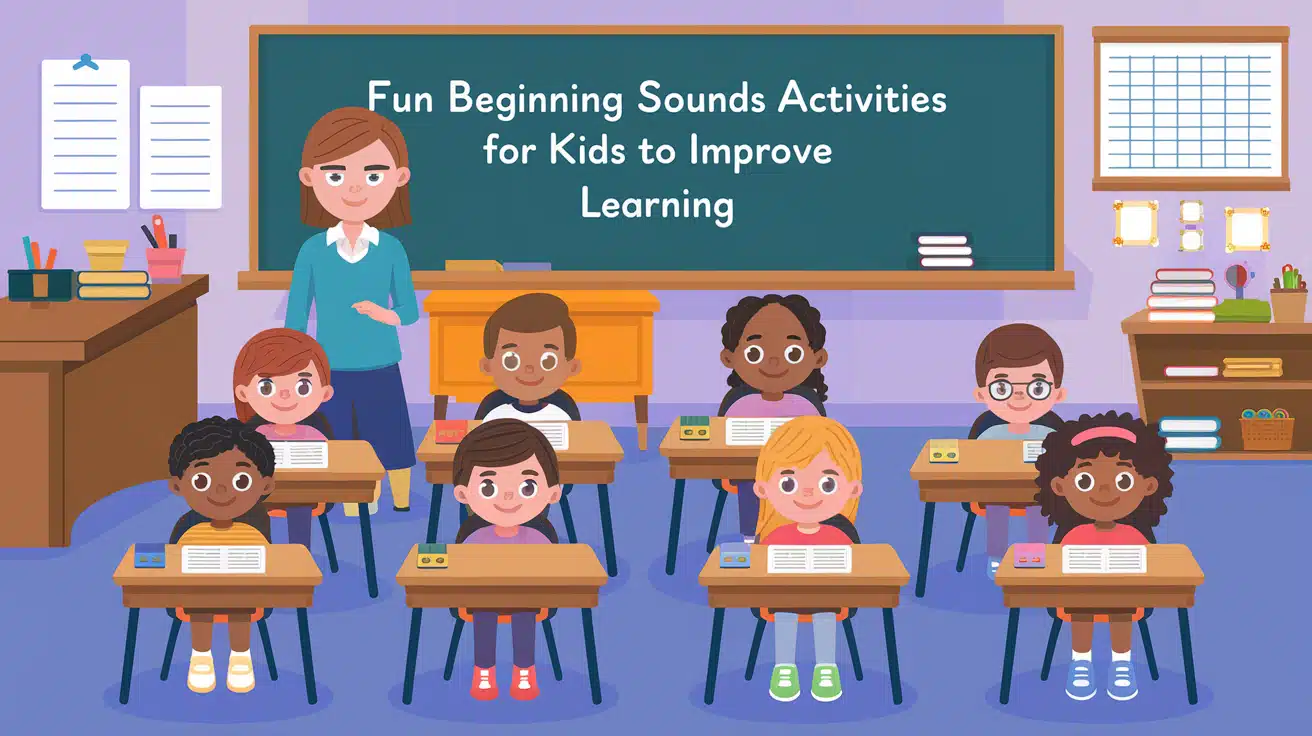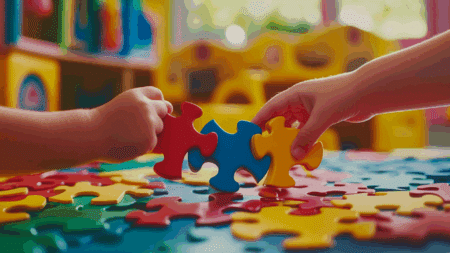Learning starts with sounds. Beginning sounds activities help kids connect letters and speech. They learn to break words into smaller parts.
This skill helps children decode new words. They start to see patterns in language and learn how sounds link together to form words.
Children first recognize the first letters in words. When they hear the “c” in “cat,” they begin to understand how language works.
Hearing and playing with sounds builds reading skills, helps children recognize words more easily, and develops important language connections in their brains. Simple practice makes a big difference.
In this blog, you’ll learn about beginning sound activities that support early reading skills.
Let us get started!
How Beginning Sounds Help Kids Learn to Read
Every word starts with a special sound. Think about the word “dog” – it starts with a “d” sound. Kids who catch these sounds get better at reading.
Beginning sounds are the first step in reading. They help children link letters to sounds. A child hears the “b” in “ball” and starts to see how words work.
This is how kids break down words into smaller parts. They learn to listen closely and spot the first sound in each word.
Sounds are the building blocks of reading. When kids play with sounds, their brains grow stronger. They learn to guess new words. They start to see how letters come together. Simple games can make this learning fun and easy.
Learning sounds takes time and practice. Some sounds are tricky, but kids who keep trying get better and better. They learn to listen carefully, and they start to see patterns in words.
Reading is like a big puzzle. Beginning sounds are the first pieces. Kids who know their sounds can read more easily, become more confident, and tackle new words with less help.
Beginning Sounds Activities for Early Readers
Games and Interactive Activities

1. Alphabet Sorting Hunt
Parents or teachers gather various household objects and challenge children to sort them based on their initial sounds.
By creating containers labeled with different letters, kids develop sound recognition skills while enjoying a playful sorting game.
Children learn to identify and group objects that start with the same sound, making phonemic awareness an interactive and enjoyable experience.
2. Sound Detective Game
Inspired by the classic “I Spy” game, this activity turns everyday moments into learning opportunities.
A parent or teacher calls out a beginning sound, such as “Find something that starts with the ‘b’ sound,” prompting the child to search for items like a ball, banana, or book.
This game is particularly useful during car rides, waiting times, or at home. It transforms idle moments into sound learning sessions, helping children sharpen their listening skills and sound recognition abilities.
3. Beginning Sound Bingo
This game adds excitement to phonemic learning by creating bingo cards filled with pictures.
Instead of traditional number calling, participants call out beginning sounds, and children mark pictures that start with the announced sound.
The game encourages active listening, sound recognition, and concentration. It can be played in various settings – classrooms, family game nights, or at home – making learning both fun and interactive.
4. Sound Hop
A physically engaging activity that combines movement with sound learning. Letter cards are placed on the floor, and children are challenged to hop to the correct letter when a specific sound is called out.
This activity is especially beneficial for kinesthetic learners who learn best through physical movement.
Sound Hop helps children associate sounds with visual letter representations while providing a fun physical challenge that keeps them excited about learning.
5. Magnetic Letter Matching
This activity turns refrigerator magnets into a powerful learning tool.
Children use a magnetic board to match letters with corresponding picture cards that start with the same sound.
It’s a hands-on approach that develops fine motor skills while reinforcing sound-to-letter connections.
Parents and teachers can create custom challenges, adapting the activity to the child’s current learning level and gradually increasing complexity.
Craft and Art-Based Activities

6. Alphabet Sensory Bin
This is a tactile learning experience that engages multiple senses. A large container is filled with materials like rice or sand, with letter-related objects hidden inside.
Children dig through the bin, discovering and identifying objects by their beginning sounds.
This activity is particularly effective for children who learn best through touch and exploration, making sound recognition a multisensory experience.
7. Letter Collage Creation
A creative activity that transforms magazine cutting into a sound-learning adventure.
Children are given magazines, scissors, and glue, and challenged to cut out pictures that start with specific sounds.
As they create a collage, they develop fine motor skills, sound recognition, and visual discrimination.
This artistic approach allows children to actively participate in their learning, making the process both educational and enjoyable.
8. Sound Scavenger Hunt Poster
Children create a large poster divided into sections for different letters or sounds.
They hunt for magazine pictures or draw objects that start with each sound, developing a colorful and informative display.
This activity encourages creativity and sound recognition and creates a lasting visual reminder of learned sounds that can be displayed at home or in the classroom.
9. Playdough Letter Sculpting
A creative activity that combines tactile learning with phonemic awareness. Children use playdough to form letters and create objects starting with those letters.
This method develops fine motor skills, encourages creativity, and reinforces sound-to-letter connections.
As children mold and shape the playdough, they engage in a multi-sensory learning experience that makes sound recognition fun and memorable.
10. Sound Puppet Making
Children create puppets using simple materials like socks or paper bags, representing different sounds.
They decorate these puppets with objects or drawings that start with specific sounds and use them to tell stories.
This activity encourages imagination, storytelling skills, and sound recognition, turning learning into a dramatic and interactive experience.
Printable and Digital Activities

11. Beginning Sound Worksheets
Structured learning through printable worksheets available online. Children circle or color objects starting with specific sounds, developing writing skills and sound recognition.
These worksheets are ideal for quiet learning time and can be used at home, in classrooms, or as homework assignments to reinforce learning.
12. Digital Sound Matching Games
These interactive online games leverage technology to make learning engaging. They allow children to drag and drop objects to match letters.
Digital activities keep children interested while developing sound recognition skills, making them a great supplement to traditional learning methods.
13. Sound Memory Card Game
This is a classic matching game in which players find pairs of pictures with the same beginning sounds. This activity simultaneously develops memory skills and sound recognition.
It can be played solo or with friends, making it versatile and enjoyable in different learning environments.
14. Alphabet Photo Hunt
Using smartphones or cameras, children are challenged to photograph objects starting with each letter, creating a digital alphabet book.
This activity encourages observation skills, creativity, and sound recognition, making children active participants in their learning journey.
15. Sound Story Creation
Children write a simple story using words with the same beginning sound and illustrate their narrative. This activity develops language skills, creativity, and sound awareness.
By crafting their own stories, children become more engaged with language and sounds, turning learning into a personal and meaningful experience.
Conclusion
Learning sounds is like building a reading puzzle. Every little game and activity helps kids connect letters and sounds.
These activities make learning fun and easy. The most important thing is to keep trying and make it enjoyable for your child.
Parents and teachers can use these activities at home or in class. Mix up the games to keep things interesting.
Celebrate small wins and keep learning light and fun. Reading starts with hearing sounds, and every child learns at their own pace.
Your support and playful approach can make a big difference in helping kids become confident readers.
Want to boost your child’s reading levels? Try these creative activities today!




